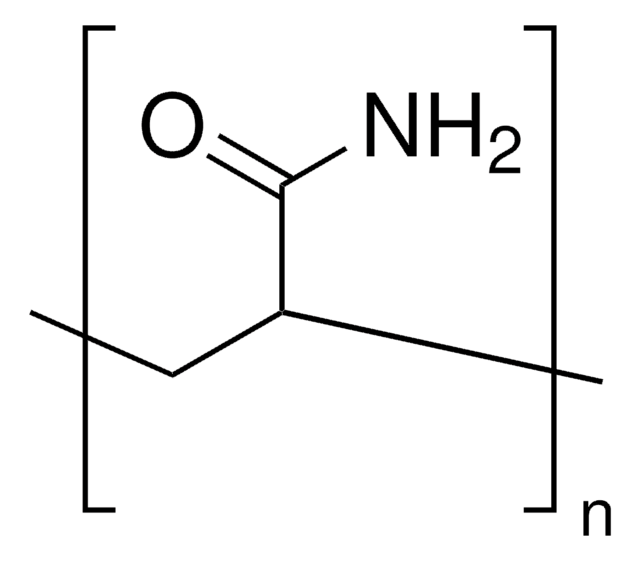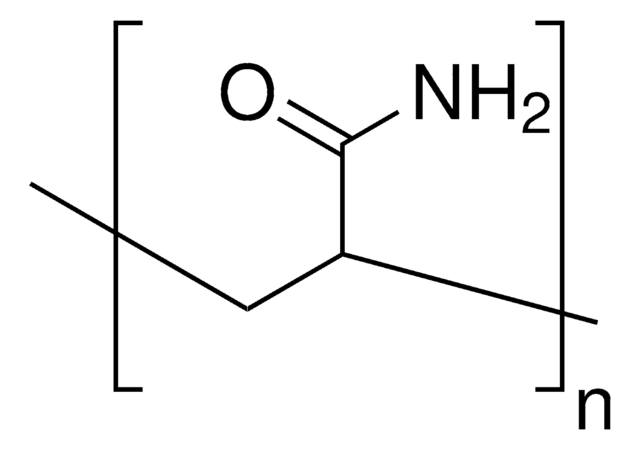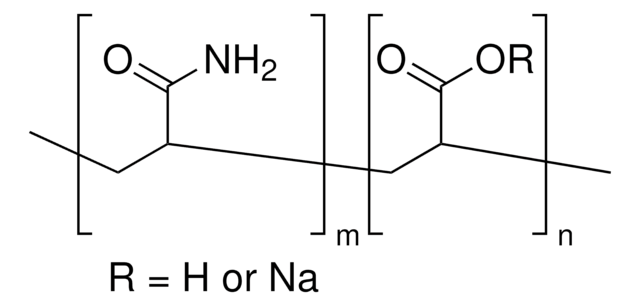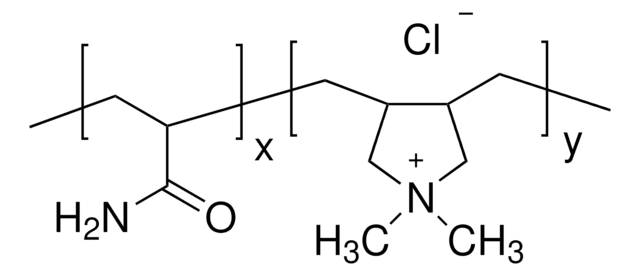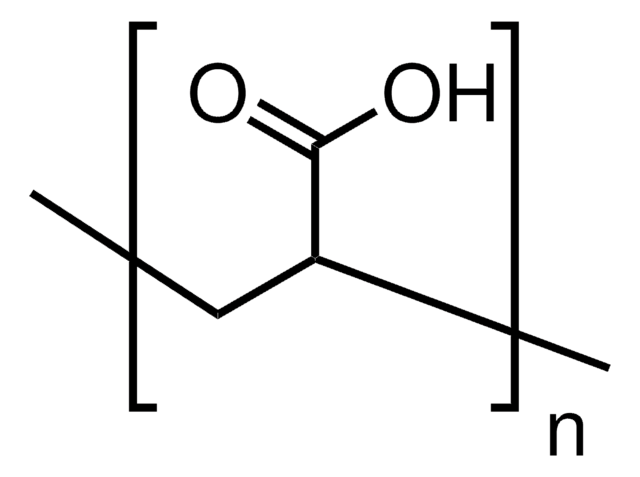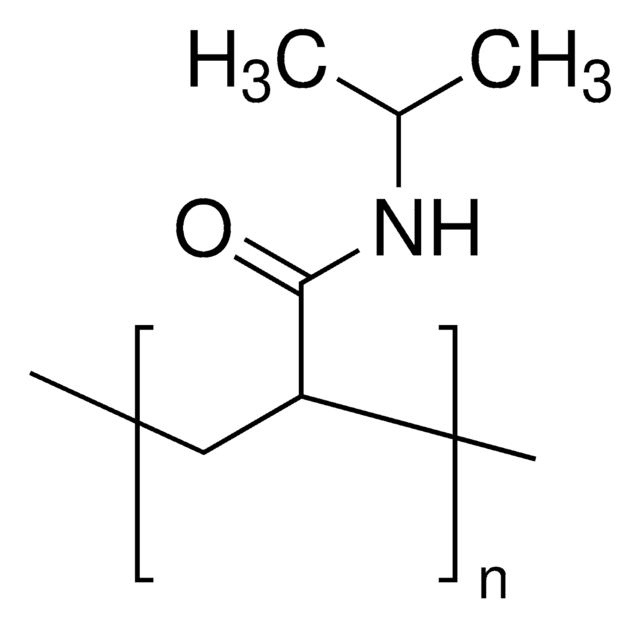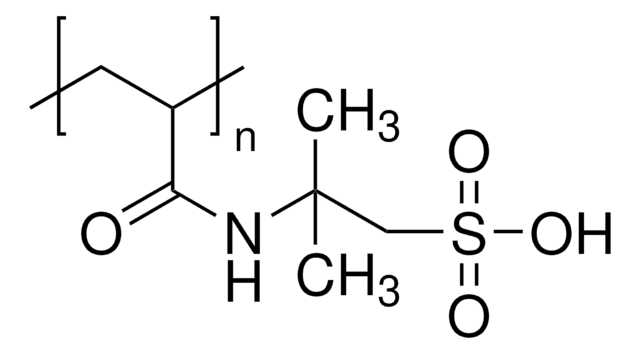749222
Polyacrylamide
average Mn 150,000
Synonym(s):
PAM
About This Item
Recommended Products
form
solid
Quality Level
mol wt
average Mn 150,000
mp
>200 °C
InChI
1S/C3H5NO/c1-2-3(4)5/h2H,1H2,(H2,4,5)
InChI key
HRPVXLWXLXDGHG-UHFFFAOYSA-N
Looking for similar products? Visit Product Comparison Guide
Application
- The influence of swelling on elastic properties of polyacrylamide hydrogels: Studies how swelling influences the mechanical properties of polyacrylamide hydrogels, relevant for biomaterials research and development (R Subramani et al., 2020).
- Basics and recent advances of two dimensional-polyacrylamide gel electrophoresis: Reviews advancements in gel-based proteomics using polyacrylamide gel electrophoresis, essential for protein separation techniques in biochemical research (S Magdeldin et al., 2014).
- Polyacrylamide gel electrophoresis: Provides comprehensive guidelines on using polyacrylamide gel electrophoresis for molecular biology applications, including its role in genotyping and molecular diagnostics (MR Green, J Sambrook, 2020).
Storage Class Code
11 - Combustible Solids
WGK
WGK 2
Flash Point(F)
Not applicable
Flash Point(C)
Not applicable
Regulatory Listings
Regulatory Listings are mainly provided for chemical products. Only limited information can be provided here for non-chemical products. No entry means none of the components are listed. It is the user’s obligation to ensure the safe and legal use of the product.
JAN Code
749222-BULK:
749222-VAR:
749222-25G:
749222-5G:
Choose from one of the most recent versions:
Already Own This Product?
Find documentation for the products that you have recently purchased in the Document Library.
Customers Also Viewed
Articles
Collagen molecules play a critical role in tissue architecture and strength, and in cell-matrix interactions as insoluble ligands to regulate the diverse phenotypic activities of cells.
Highlighting existing and novel fabrication methods for both, solid and hydrogel-based scaffold for tissue engineering applications.
Our team of scientists has experience in all areas of research including Life Science, Material Science, Chemical Synthesis, Chromatography, Analytical and many others.
Contact Technical Service